If you’ve been thinking about traveling in a motorhome, you have probably explored the subject quite a bit, including the possibility of buying a bus and converting it to an RV yourself. A lot of people do this, and the many photos posted on social media are proof of that.
However, is it actually easily done? Or is it better to look into buying a ready RV and save yourself the effort? In this article, we will tell you everything about bus conversion, including the types of conversion that exist, as well as provide a rough estimate of the cost of a DIY project so you can see for yourself which option suits you best. Ready to dive in? If so, keep reading.
Bus RV Conversion: What Is It?
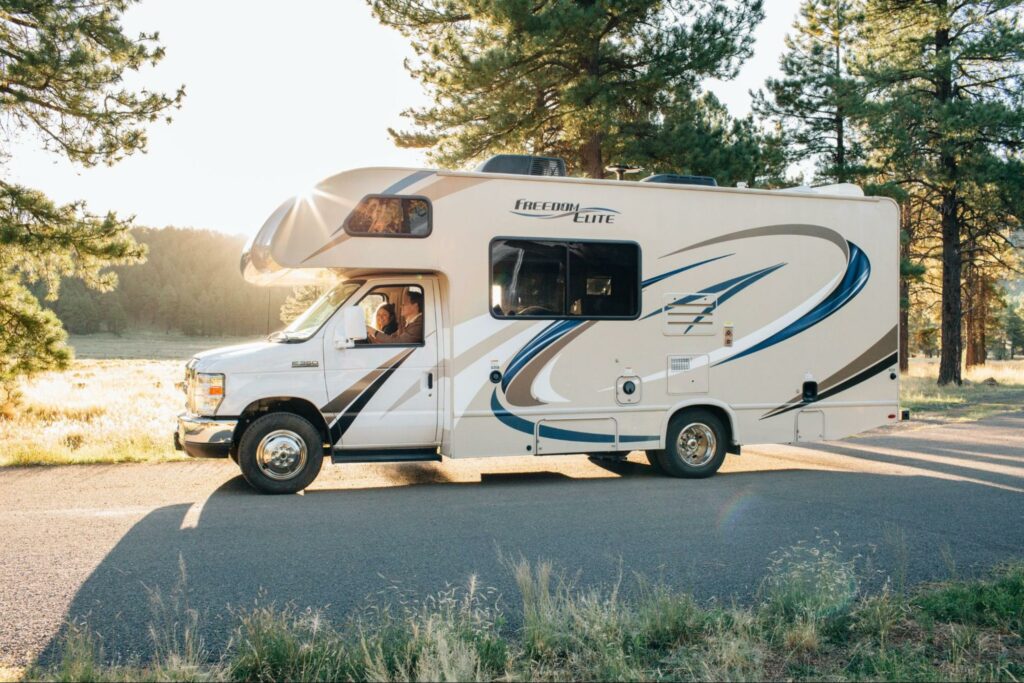
Essentially, the process of converting a bus means exactly what it says on the tin: a bus once used to transport people from one place to another undergoes a series of modifications to allow it to be used as an RV. A lot of handymen do it themselves, but if you’re not into DIY, you can also entrust this job to professionals.
The end goal of the conversion is to turn a bus into a motorhome that is equipped with all the essentials necessary for living and making long-distance traveling comfortable.
Skoolie Conversion
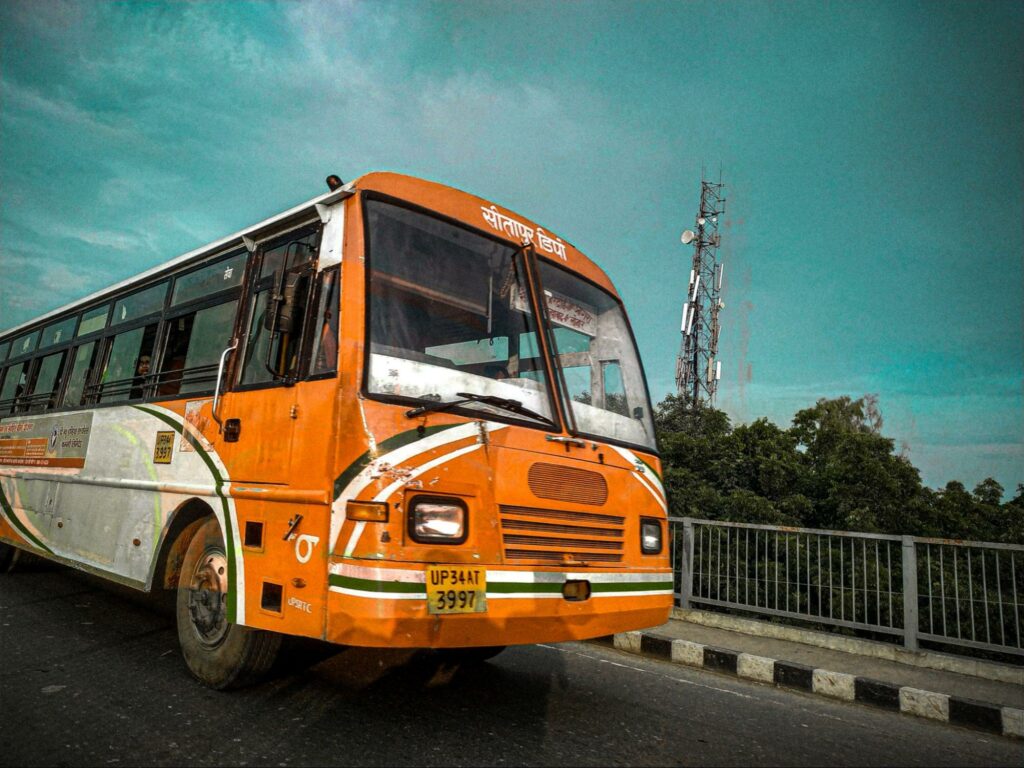
With regard to school bus conversion, it’s basically the same thing, except that you use a school bus, not an ordinary one. Most often, this type of conversion is called “Skoolies”, the same as school buses are called all across the USA.
But why do people go for school buses in the first place? Here are a few reasons:
- One of the reasons why school buses have become a popular choice for conversion is because of how durable and roomy they are. Without seats, they make a perfect living accommodation that can be seamlessly customized to suit various use scenarios;
- Another one is the price. Unlike ordinary buses, they usually come at a considerably lower price, making them a more affordable option for DIYers.
When it comes to conversion itself, some buses undergo a full transformation, where the insides of the bus are removed and replaced with new flooring, insulation, walls, and ceilings to create a fully functional living space.
Others, such as those often used by traveling musicians, retain most of the bus’s original features while adding amenities, such as a sleeping area, a toilet, and a faucet behind them.
Overall, the idea behind converting a bus into a motorhome is to make it a livable place with enough amenities to live and travel comfortably, regardless of whether you are planning to use it all the time or just occasionally as you travel from one landmark to another.
A Closer Look on Bus Conversion: How They Turn Into an RV
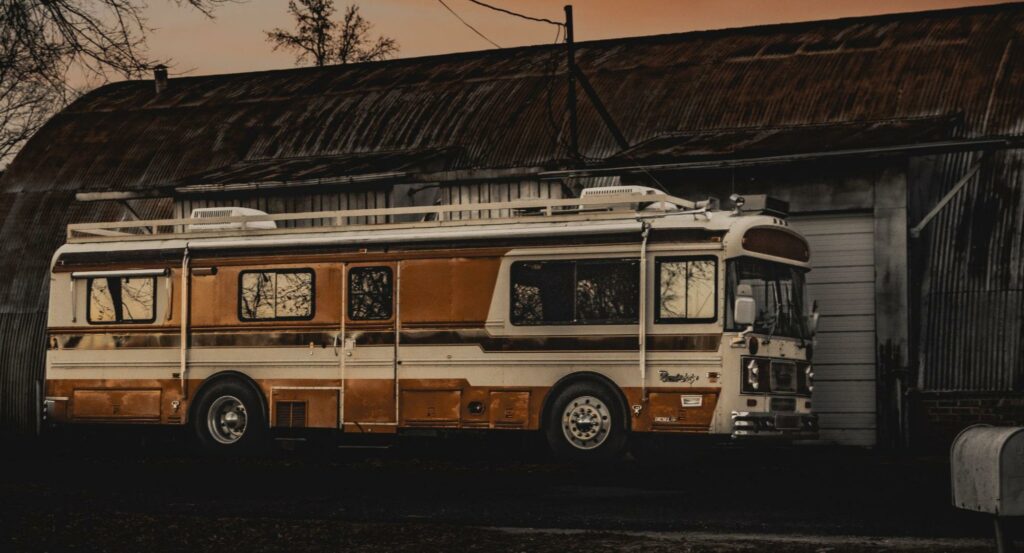
Now let’s take a closer look at how school buses turn into homes on wheels. As we’ve mentioned earlier, there are two possible paths:
- Commercially, by companies specializing in converting buses into RVs;
- As a DIY project, where the bus is bought by an individual.
More on each approach further in the article.
Commercially
Commercially converted school buses are done by companies that specialize in bus conversions. Most often, they strip down a bus to its bare bone and use only its chassis for a transformation, which they can then custom build into a motorhome.
These companies not only have the experience to do the job to the highest standards, but they also have the resources to turn even a wrecked bus into a fully functional RV, with all of the amenities and features you need for a comfortable life on the road.
As a result, the RVs that go on sale look upscale, often equipped with powerful engines and solar panels, making them suitable for full-time use and carefree travel of millions of miles, if not more.
A case in point is Wanderlodge. This series of recreational motorhomes, which was introduced in the 1960s by Blue Bird Corporation, took the Blue Bird All-American school bus chassis and transformed it into a high-end luxury RV.
The unique thing about Wanderlodes was that each of them was built to meet the exact specifications of customers, making them extremely popular back then and even now. In fact, some of the latest conversions, depending on their customization features, were priced as much as American homes, bringing them on a par with posh campers produced by Prevost.
As a DIY Project
In contrast to commercially converted vehicles, DIY conversions are done by individuals who have the skills and motivation to take on the project themselves. A lot of people are actually doing it and find the whole experience fulfilling and rewarding.
In general, modifications inside the vehicle are not huge. Typically, DIYers get rid of the seats, except for the driver’s one, put in new flooring, and create an area for a kitchenette, living space, toilet, and one or two bunks, depending on the family size.
Quite often, these motorhomes are used by families as a permanent living space where they live and travel, but a lot of families who can afford the space on their land can also have a camper that they use solely for travel purposes.
What’s great about DIY conversions is that they allow a lot of flexibility in terms of budget. You don’t have to pay for labor or expensive equipment. Besides, there’s no pressure time-wise. By doing the work yourself, you can move at your own pace, without worrying about running out of money, and add new features gradually as your budget allows.
Which Is Cheaper: To Buy a Ready RV or Convert a Skoolie Yourself?

You might be surprised but converting a bus yourself can be a lot cheaper than buying a ready RV. According to some studies, the cost of a DIY conversion averages 10% of the price of a used RV, bringing the total cost, including the money you’d spend to buy a school bus, to about $30,000.
Just so that you can compare, the price of a used RV starts from $300,000 and may go higher, depending on the bus make, year, and design features.
Surely, even a DIY project can be quite expensive if you decide to equip it with high-end features and luxury materials. Even so, it would still be cheaper than if you bought a brand-new luxury RV with all the bells and whistles.
Which Is Safer: A Ready RV or DIY Conversion?
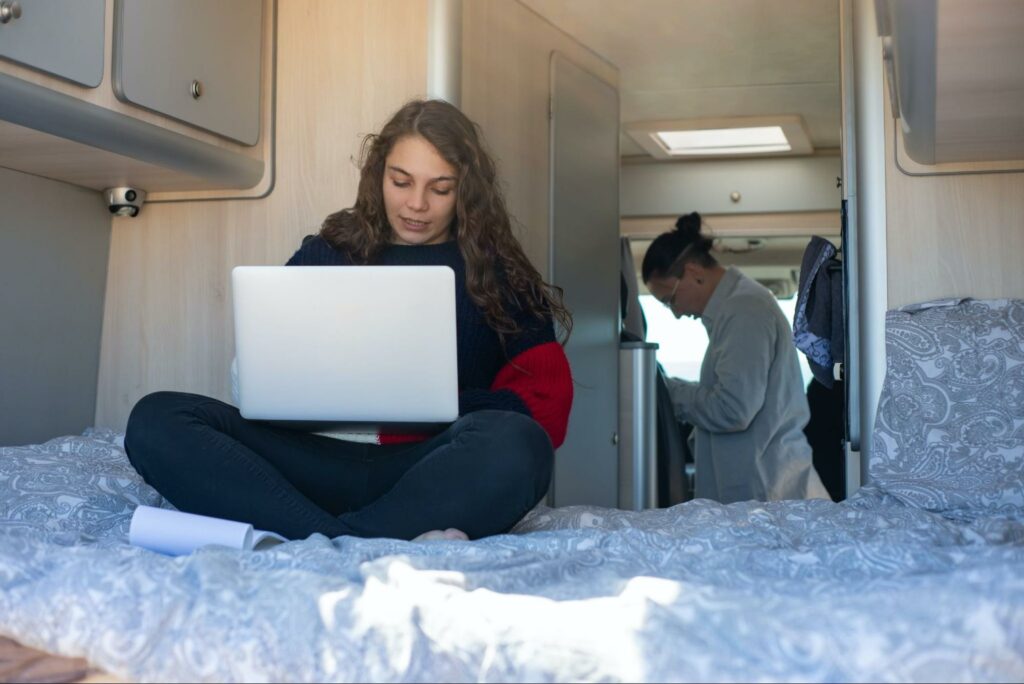
In general, both a converted bus and an RV are designed with safety in mind, otherwise, who would be using them? That being said, DIY conversions are typically a bit safer due to the construction peculiarities. Unlike RVs, which may often contain plastic parts, converted skoolies are made of metal, making them less flammable and overall more durable.
School buses are even better because they are made of steel, which makes them more resistant to crashes compared to other vehicles on the road. Not only that, but they also have a much more robust interior design, making further tweaks and twists a lot easier and cheaper.
However, it’s important to note that with DIY conversions, it’s crucial to follow all safety regulations. Everything, starting from electric connections to safety belts, should be set up in a safe manner and comply with the standards, which can be tricky for those who are not experienced in electrical work.
From this perspective, RVs would be safer, of course. On the other hand, if you hire someone to help with setting up all electrical components and checking any potential issues with the vehicle, you’d avoid lots of risks and ensure that your motorhome is safe to travel in without spending a fortune.
Best Buses to Convert
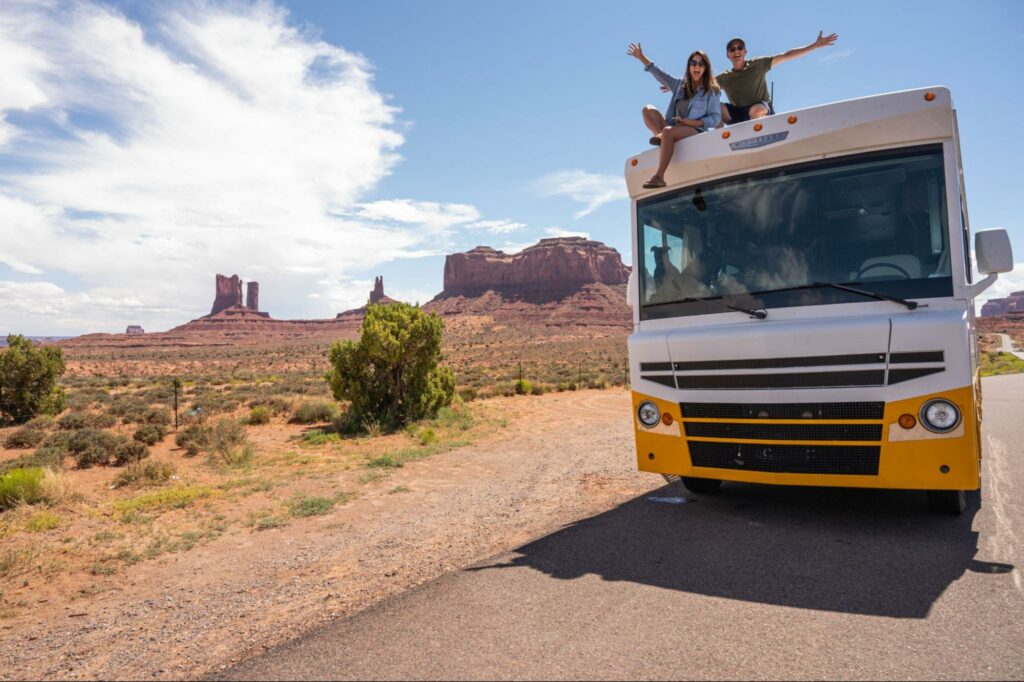
Which bus is the best to convert is entirely up to the owner’s preferences and what they are used to because there are plenty of options to choose from. That said, all of the buses can be split into two main categories:
- Conventional (“dog nose”);
- Skoolies (“flat-nosed”).
Furthermore, you may want to pay attention to the location of the engine. There are buses where it is located at the front and those where it’s located in the rear. Which configuration to choose would depend on how spacious you want the bus to be.
The price can be an important consideration, too. Conventional buses are usually cheaper than skoolies. They are also considered to be easier to convert, making them a popular choice among DIYers. On the other hand, this doesn’t make them better.
Those who’ve had at least some experience of driving two vehicles would probably stick with schoolies because they offer better visibility. What would also tick the scale in favor of skoolies is that they have a higher gross vehicle weight rating as well.
One of the best choices for DIY conversions would probably be a flat-nosed bus with the engine placed in the rear. First off, as we said, it offers better visibility. And second, since the engine is in the rear, it provides more space up front to convert into living space, to say nothing of less engine noise and better weight distribution.
Besides, they are often equipped with much more capacious engines, making future rides more comfortable and fuel-efficient.
However, flat-nosed buses are not void of shortcomings:
- One of them is – if you choose a vehicle with an engine in the rear, for obvious reasons, you won’t have a rear door. Will this worry you or not comes down to the potential uses of a vehicle, of course;
- Another one is low ground clearance. That’s where you should give it a good thought and anticipate all possible uses because if you’re planning to drive off-road, it might be a bit of a nuance;
- Finally, the approach angle of skoolies tends to be better than that of conventional buses, which can be an important consideration in certain use case scenarios.
Regardless, the choice of the right bus is up to you. Although we’ve highlighted some of the advantages of skoolies, this doesn’t mean they are suitable for everyone, so before choosing any option, you should consider potential applications. What might be suitable for someone won’t necessarily tick all the right boxes for you.
Which Is Better: To Buy an RV or Convert a Bus Yourself?
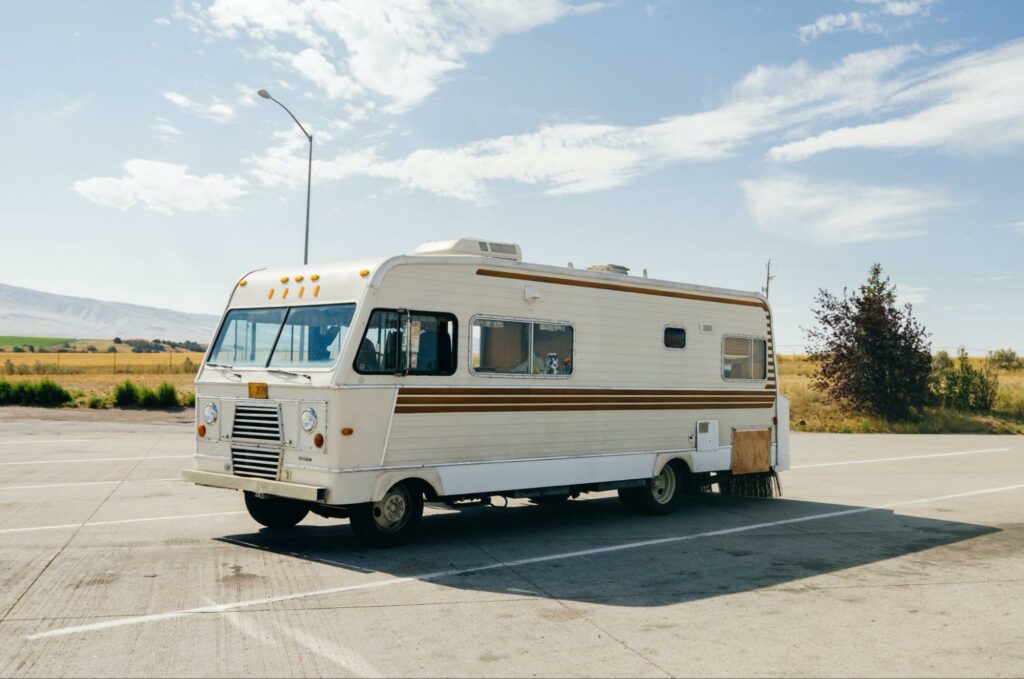
Now to the question of which is better – to buy a ready-to-use RV or build one yourself, there’s no definite answer. This is the choice you need to make based on the potential use of the vehicle, your budget, and your DIY skills. However, we can give you some guidance, which should make your choice a bit easier.
As we’ve mentioned earlier, converting a school bus is generally cheaper than buying an RV, but it can also take quite a lot of time and effort, especially if you have no prior experience doing things like this. Surely, you won’t be pressed for time. However, if you don’t have strong DIY skills, you might find the whole thing quite overwhelming.
So, one of the first things to do is critically evaluate your capabilities and decide whether you’re ready to handle such a project or not. You can check projects that have already been created by other people to see what the process typically involves and if it’s something you can do.
Make sure to explore challenges, too. By watching videos on YouTube and reading forums, you’ll get an idea of what difficulties DIYers usually encounter, which will save you from unexpected surprises and give you a realistic idea of what to expect during the conversion process.
Besides the manual side, one other thing to keep in mind is that not all campsites allow for parking of converted buses, which can be a nuance if you build your own bus and find out about it later. So, you should take the time to research campgrounds in your area to make sure you don’t run into any of these kinds of issues.
Your skills in driving a bus should also be factored in when making a choice. Driving a school bus isn’t the same as driving a car or an RV, so it’s important that you feel comfortable with the departure angles and the dimensions of the bus.
Of course, the same can be said about an RV, especially if we’re talking about a luxury Class A motorhome. However, with school buses, you may face additional challenges such as limited visibility and less maneuverability due to their size. Therefore, it may be a good idea to take a defensive driving course to improve your driving skills before hitting the road.
Finally, you’ll also need to sort out your license to drive a bus legally, which is another thing to consider before making a decision.
As you can see, it’s not a matter of which is better, but rather a matter of which is better suited for a specific situation and what you yourself feel more confident about.
Conclusion
To wrap things up, converting a school bus is definitely not a bad idea if you’ve got DIY skills and time to do the work yourself. Not only is it much cheaper compared to buying an RV (even a used one), but also the whole experience is rewarding as you can build a motorhome that best reflects your personality and lifestyle.
Surely, there are some challenges, too. First off, you’d need to have a license to drive, and second, you’d need to familiarize yourself with the safety regulations to make sure that your conversion is safe for the long haul.
Regardless, the effort is definitely worth it. A converted school bus is a hot new trend that is gaining popularity, and it is also one of the best options for a home on wheels.